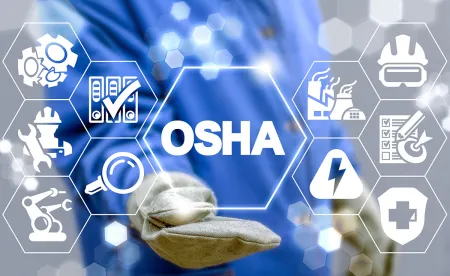The Atlantic hurricane season runs from June 1 to November 30 each year. This year, in mid-June, the Occupational Safety and Health Administration (OSHA) published the “Hurricane eMatrix,” a hazard exposure and risk assessment tool that provides employers with a host of suggestions and guidance to prepare for hurricane season, and, perhaps more importantly, to prepare for the response to a hurricane that has made landfall.
Quick Hits
-
OSHA’s Hurricane eMatrix may suggest that the agency is shifting from a compliance-assistance approach to an enforcement-focused approach.
-
The matrix provides tips on personal protective equipment for both employers and employees.
-
The matrix also includes recommendations related to heat stress that may foreshadow the heat illness and injury prevention standard that OSHA has long promised.
While OSHA has traditionally engaged in a compliance assistance role in the aftermath of a hurricane, the publication of the Hurricane eMatrix may suggest that OSHA will shift to an enforcement-focused approach going forward. If this shift occurs, OSHA’s matrix lays out a pretty solid road map of the agency’s enforcement priorities.
The matrix contains a significant quantity of information, resources, and hazard-specific recommendations for employers related to a number of topics that may at times be overlooked in hurricane response, including the following: exposure monitoring; asbestos; lead; discovery of unknown chemicals; search and rescue; removal of human and animal remains, public safety (law enforcement and emergency medical services); locating and establishing temporary housing facilities; and locating, collecting, and housing stray animals.
The matrix includes five sections that are “designed to help employers make decisions during their risk assessment that will protect their workers working in hurricane-impacted areas.” The five sections are:
-
“How to Use This Matrix—An essential first step”
-
“Employer Responsibilities and Worker Rights and Responsibilities”
-
“General Recommendations for all employers and response and recovery workers”
-
“Summary of Response and Recovery Worker Exposure Sampling and Monitoring Information”
-
“Activity Sheets with health and safety information for specific response and recovery operations”
Each section contains hyperlinks to various resource pages, most of which existed before OSHA published the Hurricane eMatrix. A large number of publications from other governmental agencies, including the U.S. Environmental Protection Agency, the U.S. Coast Guard, and the Centers for Disease Control and Prevention, are hyperlinked in the Hurricane eMatrix.
While the matrix includes a host of recommendations related to personal protective equipment (PPE) that employers may want to consider providing to employees working within areas hit by a hurricane or performing hurricane recovery work, it also includes a list of recommended personal gear for workers. Moreover, the matrix provides guidance for personal hygiene and general decontamination of clothing, tools, and equipment.
The “General Recommendations” section also includes several points related to heat stress that may foreshadow the heat illness and injury prevention standard that OSHA has long promised. Those points are:
-
“When possible, acclimatize response and recovery workers to hot and humid environments by gradually increasing their work period or workload over the course of several days.”
-
“Reduce physical exertion levels by providing extra individuals.”
-
“Schedule heavy work for cooler periods of the work shift (e.g., early mornings, cool/overcast days).”
-
“When possible, provide temperature-controlled cabs for equipment operators.”
-
“When possible, and where appropriate, use fans/ventilation to provide air movement for cooling.”
-
“Take frequent rest/water breaks in areas that are shaded or air conditioned.”
-
“Drink 4 to 8 ounces of water or sports drink every 20 minutes while working in hot, humid conditions.”
-
“Limit fluids to no more tha[n] 1½ quarts per hour when working in hot, humid conditions. Do not drink more than a total of 12 quarts of fluid in 24 hours.”
-
“Limit the intake of caffeinated and alcoholic beverages.”
-
“Wear light-colored clothing.”
-
“Know the signs and symptoms of heat stress; use the buddy system to monitor one another for these signs/symptoms.”
-
“If someone shows signs of heat stress (exhaustion or stroke), request immediate medical attention, move the individual to a cooler area in the shade, loosen or remove restrictive or heavy clothing, provide cool drinking water, and fan and mist the person with water.”
-
“Consider the use of personal cooling devices. Examples of cooling devices include cooling vests or suits that use circulating water or ice packs, and venturi cooling systems for air-supplied respirators or encapsulating suits.”
Finally, the matrix includes a section titled “Activity Sheets” that employers engaged in hurricane response can use as a guide for training employees, understanding the risks employees face, and planning the work to be performed. The activity sheets can be a resource for employers to generate the content for job safety analysis and job hazard analysis forms to be completed by their crews for the work activities they are tasked with performing.
Employers responding to hurricane-impacted areas may want to consider becoming familiar with the Hurricane eMatrix and OSHA’s expectations of employers working in those impacted areas.





 />i
/>i

